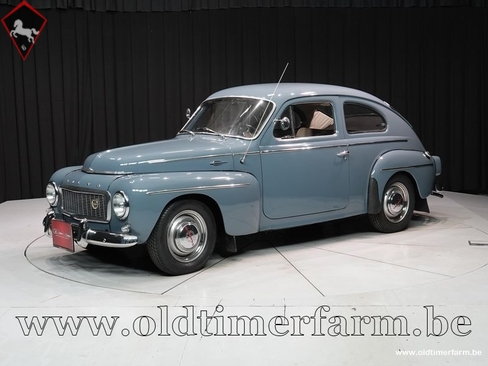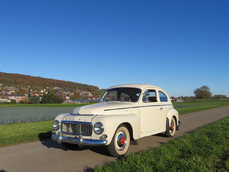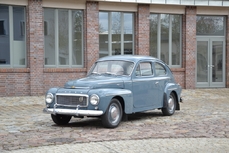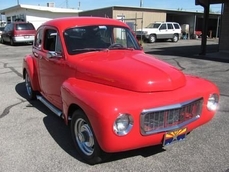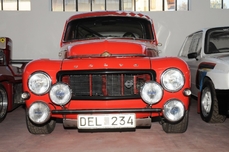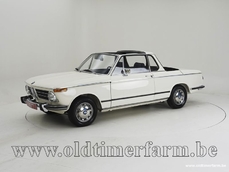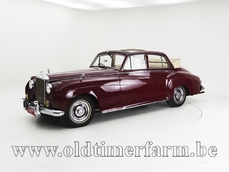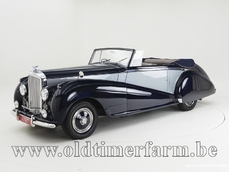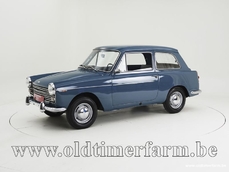Volvo PV544 544 B16 '60 1960
General description :
The Volvo PV is a series of two-door, four-passenger car models — the PV444 and the PV544 — made from 1947 to 1966. During WW2, Volvo decided that a new, smaller car that could deliver good fuel economy would assure the company's future. A raw materials shortage during the war drove home the point that an automobile should be smaller, and also complicated Volvo's ability to mass-produce the product. In 1944, when the car was finally introduced to a car-hungry public, response was very positive and orders poured in from the Swedish population. It was another three years though, until 1947, before series production began. The PV quickly earned a reputation for being strong and rugged, although the design was considered outdated from early on. The PV also competed successfully, in the American SCCA class but also internationally, with a second-hand PV544 memorably winning the Safari Rally in 1965. The PV444 was Volvo's first uni-body car. It was also the first Volvo in almost 20 years to come with a 4-cylinder engine (earlier models had used side-valve straight-sixes). The first PV444s were powered by a 40 PS 1.4 L straight-four engine designate straight sixes. In 1958, the PV544 was phased in. Subtle differences with the PV444 included the introduction of a curved one-piece windshield to replace the two panes of flat glass, larger taillights, and a ribbon-type speedometer. The 444's 3-speed manual transmission was also supplanted by a 4-speed unit in the 544. The interior was modified to accommodate 5 persons instead of 4 by increasing the width of the back seat and using thinner backrests of the front seats. This way the car could become a little roomier on the inside while keeping the same body. The next significant change occurred in 1962, when the B16 was replaced by Volvo's new B18 engine, initially developed for the P1800 sports car introduced the previous year. The PV544 was also made as an estate (wagon) version, the Duett, initially designated the P445 and later the P210. Exactly 440,000 units (PV444 and PV544) were built during the 18-year run. Specifications Bodywork Length : cm (in): 440 (173.2) Width : cm (in): 160 (62) Height : cm (in): 156 (66.9) Wheelbase : cm (in) : 260 (102.4) Weight: kg (lb) : 1090 (2391) Mechanics. Displacement : straight-four 1584 cc, frm Valve gear : 8 Fuel system : 1 Zenith carburettor Gearbox : 4-speed manual Drive wheels : rear wheel drive Maximum power : 66 hp at 4500 rpm Maximum torque : 116 Nm at 2500 rpm Maximum speed : 140 km/h (89 mph)
http://www.oldtimerfarm.be/en/collection-cars-for-sale/5503/volvo-pv-544-b16-60.php
1960 Volvo PV544 544 B16 '60 is listed sold on ClassicDigest in Aalter by Oldtimerfarm Dealer for €10950.
Car Facts
Car type : Car Make : Volvo Model : PV544 Model Version : 544 B16 '60 Engine size : 0.0 Model Year : 1960 Location : Aalter
Sold
Seller Information
Sold
People who viewed this Volvo PV544 also viewed similar Volvo listed at ClassicDigest
Other cars listed for sale by this dealer
About Volvo
Volvo has a rich history spanning over nine decades, marked by a commitment to safety, innovation, and Scandinavian design. Here's an overview of Volvo's evolution, including key models and the design and technological highlights leading up to the XC70:Early Years and Foundation: Volvo was founded in 1927 in Gothenburg, Sweden. The first Volvo car, the ÖV4 (Jakob), rolled off the production line in 1927. Volvo quickly gained a reputation for producing sturdy and safe vehicles.
Safety Innovations: Volvo became synonymous with safety innovations. In the 1950s, they introduced the three-point seatbelt, a groundbreaking invention that became standard in automobiles worldwide. Over the years, Volvo continued to pioneer safety features such as crumple zones, rear-facing child seats, and side-impact protection.
Design Evolution: Volvo's design philosophy evolved, blending Scandinavian simplicity, functionality, and safety. The brand's design language embraced clean lines, robustness, and a focus on interior comfort.
Key Models Through the Years:
Amazon (120 Series): Introduced in the late 1950s, the Volvo Amazon featured elegant styling and became popular for its reliability and safety features.
140 Series: Launched in the 1960s, it showcased Volvo's focus on safety and introduced innovations like disc brakes.
240 Series: Introduced in the 1970s, the 240 became an iconic Volvo model known for its durability, safety, and boxy design, remaining in production for nearly 20 years.
850 Series: In the 1990s, Volvo introduced the 850, known for its innovative features, including the first front-wheel-drive model with a five-cylinder engine.
XC70 Series: The XC70 debuted in the early 2000s as an off-road variant of the V70 wagon. It combined Volvo's renowned safety features with all-wheel-drive capability and a higher ground clearance for enhanced off-road performance.
XC70 Design and Tech Specs: The XC70 epitomizes Volvo's dedication to safety, versatility, and Scandinavian design. Some design and technical highlights include:
Robust and functional design with protective cladding and raised ground clearance for an SUV-like appearance.
All-wheel drive (AWD) system for better traction on various terrains.
Advanced safety features, including Volvo's City Safety system, which helps prevent collisions in urban traffic situations.
High-quality interior with comfortable seats, ample cargo space, and modern infotainment and connectivity options.
